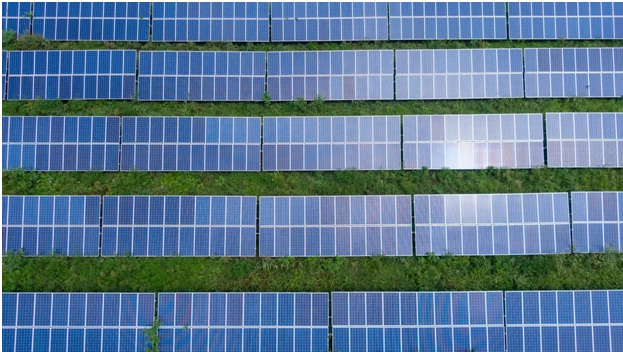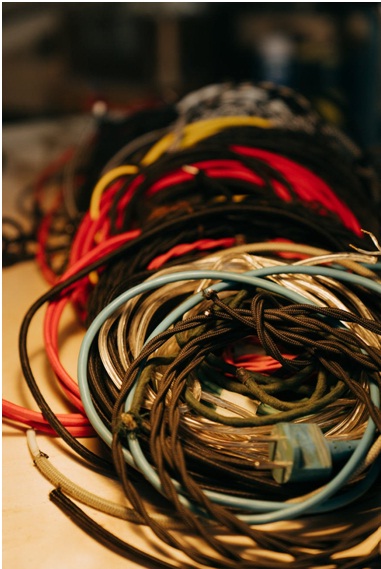10 AWG Solar PV Multi Conductor Tray Cable: A Mouthful, but What Does It Mean?
1st Sep 2020

In the event that you have been tasked with finding a type of cable known as 10 AWG solar PV multi conductor tray cable but have never heard of it before, then you are going to be in for quite a chase. That is, of course, unless you are an electrical engineer and know exactly what those words all mean. You might not, of course, and that is reasonable, which is precisely why this article is going to break down the components of that big phrase into smaller, digestible pieces.
We sell a lot here at EWCS Wire, and multi conductor tray cables are only a small piece of what we offer our customers. Just as the above phrase is a lot of syllables that take a lot of stamina to break into understandable parts, there are many other specialty products on our site that require the same.
Check out our blog on the different types of esoteric terms you are liable to find on our website and what some of them mean. That will give you a place to start when you are researching the different nuances of electrical wire and cable. If you don’t find what you’re looking for there, you might be able to catch us via the live chat feature on our website. If not, you can always email us at Sales@EWCSWire.com or get us by phone at 800-262-1598.
So, with no further ado, let’s get into the matter. What exactly is 10 AWG solar PV multi conductor tray cable, and what is it used for? Let’s break down the parts.
American Wire Gauge
Let’s start out with American Wire Gauge, what it is, what it means, and how it applies to this specific situation.
If you are at all familiar with electrical wire and cable, then you have probably heard of this term before and probably know it refers in some way to the diameter of the cable, or its thickness. You might even have made the observation that the larger the number gauge, the smaller the diameter of the cable. Therefore, 10 American Wire Gauge (or AWG) is smaller than 8 AWG cable.
To explain this, we need to understand more about what American Wire Gauge is. American Wire Gauge, which has been called by other names in the past, is an index for giving a measurement of the cross-sectional area of a round wire. If the wire is solid (we’ll get into detail on solid wire vs. cable later in this article), then the measurement is basically equivalent to the familiar equation
This gets more complicated when you are working with the cross-sectional surface area of a stranded wire (cable - more on that later) because the cable is not cross-sectionally solid. Therefore, accounts need to be made for the space between the wires.
American Wire Gauge, then, is a measurement of the cross-sectional area of a wire or cable that is expressed logarithmically, and because of this it is an inverse measurement. By inverse, we mean that the larger the wire gauge, the thinner the wire, as expressed just above this explanation. In simple terms, the larger the wire gauge, the smaller the wire, and vice-versa; that is an inversion.
This matters because the greater the area of a wire, the less resistance it will offer the current of electricity flowing through it. That means that the smaller the gauge, the less resistance the wire or cable will offer, all things being equal. Therefore, AWG and the voltage rating of a wire or cable are related. All other things being equal, smaller AWG equates to the ability of a wire to deal with higher potential and carry a higher current.
The rating of a specific solar cable will be indicated according to the manufacturer’s information, but to keep things simple, a 10 AWG wire or cable can carry more voltage or current safely (again, all other things being equal) than an otherwise equivalent 12 AWG wire or cable.
Solar Cable: AKA Photovoltaic Cable, AKA PV Cable
So we have covered American Wire Gauge and have shed a little bit more light on that matter, and now we’re going to get to the term solar cable. Luckily enough, PV cable and solar cable are terms that are sometimes used interchangeably, so we can go into some more detail into what each of these means and why it matters.
The process of harnessing solar power for domestic use (and even for industrial and commercial uses) has become increasingly popular year after year. It has come to the point that there are organizations involved in selling solar arrays to consumers and homeowners by offering to install solar panels for free in exchange for some of the energy captured.
As solar energy becomes more valuable, more and more homeowners and businesses are turning towards it as a viable and renewable alternative to traditional energy sources. In fact, we even recently published a blog on some of the benefits that you might be able to reap as a homeowner if you take up an avenue for providing your home with solar energy.
With that in mind, the simple answer is that solar cable is simply the cable that is used to connect the different components of a solar array, as well as to connect the panels to the battery. Therefore, for the most part, solar cable can be described as the cable that carries the electricity produced from solar energy to the battery where it is stored.
Solar cable goes by another name, being photovoltaic cable, which is also called PV cable, so as you can see, there is a bit of redundancy involved in calling cable solar PV cable, although it is occasionally called that.
There’s more to solar cable, or photovoltaic cable, or PV cable, if you will, then just a string of esoteric names. Solar cable possesses a few unique traits that make it a viable option for use in solar arrays.
Consider the conditions which solar cable has to contend. By its very nature, it has to deal with the elements, first and foremost being huge dosage of sunlight. That means that, for one, the cables will be exposed to ultraviolet light which is extremely damaging to a number of different natural and synthetic materials, and that it will also be subject to great heat from sunlight. This is all necessary, as these cables are meant to carry solar energy anyway.
The cables will also be subject to a potentially large range of temperatures as well as great fluctuation in moisture levels, being outside all of the time. As you might have guessed, solar cables typically possess two traits that make them suitable for the uses to which they are put. In the first place, they are resistant to ultraviolet radiation, and in the second, they are resistant to the weather. That means that they are not only resistant to temperature changes but also to changes in moisture and more.
So, we have some understanding of the terms associated with 10 AWG and solar and PV, but what about multi conductor tray cable?
Wire vs. Cable: What’s the Difference, and Does It Matter?
You have probably heard of the terms wire and cable, whether you are an electrician or not, but there is a specific application for each of these terms and it is relatively straightforward to understand. That is, it doesn't require any in depth understanding of electrical systems, although there are some significant impacts that this difference has.

Ultimately, there is only one difference between wire and cable. Whether you have a wire or a cable, you will hear these things called as conductors. That is because they “conduct”electricity, or carry a current of electricity between sources. Therefore, wire and cable are both conductors. The difference between them is that wire is a single strand and cable is a bunch of strands of wire braided together. That’s basically it and is the entire difference between them summed up.
However, there are some reasons that wire or cable might be better suited to a given application, as there are here. Wire is very tough, but it can be difficult to work with, as the thicker the wire gets, the harder it is to bend and work. That makes wires suitable for situations where the wire does not need to be bent into place or otherwise manipulated. They are also very resilient.
However, in other situations where a higher degree of flexibility is important, such as with marine battery cable or welding cable, a higher count of individual conductors is necessary to ensure flexibility. Therefore, cables are more suitable for these applications than wires, simply because they are more flexible.
Therefore, the term “multi conductor”indicates a cable, and in this particular case, a cable might be more suitable than a wire because wires that would be thick enough to handle voltages commonly associated with solar power would be too thick, and therefore too stuff, to manipulate.
It’s a bit redundant to call cable “multi conductor”cable, but that’s what is meant by it; that there is more than one strand of wire in the assembly.
Tray Cable: Go the Distance
We have almost the entire array of words parsed, and now we only need to shed some light on what is meant by the term tray cable. Like the difference between wire and cable, there is a relatively simple answer to the question of “what is tray cable.”
In the past, although it remains common today, cables spanned long distances in conduits. Conduits are great to use because they are strong and provide a great deal of protection to the wires and cables they house. This protection offers a safeguard against moisture, extreme temperatures, sunlight and other environmental hazards. Some conduits also protect cables against electrical interference.

However, conduit can be heavy and difficult to lay. In addition, it can be very difficult to draw wires and cables through conduit, especially over long distances. It also becomes difficult to service wires and cables that are contained within a conduit because the conduit does not afford easy access. In addition, conduits do not dissipate heat well, which can be troublesome in some situations.
Therefore, more and more situations are looking for ways to use tray, and tray cables, to lay wires. Trays are open, unlike conduits, which makes it easier to service the wires and at the same time allows for greater heat dissipation. Overall, it is easier to work with tray and tray cable than it is to work with conduit.
Therefore, tray cable is simply cable that for one reason or another is rated to be used with a tray as opposed to being used with a conduit. Some wires and cables are not acceptable for use with trays, so you have to be very careful with your planning - and always consult with an electrician or an electrical engineer.
Find What You Need Here!
Now we have parsed all of the fine elements of 10 AWG solar PV multi conductor tray cable. It is a multi-conductor (cable) that is rated for use with trays that is 10 AWG, and also rated for use as solar or PV cable, meaning that it is UV and weather resistant. All of that for one term!
Of course, if you want more specific information about this type of cable in specific or about solar panel cables in general you could call our team at 800-262-1598. We’d be glad to shed some light on the matter.
While you’re here, though, don’t miss a chance to check out our collections of marine battery cable and welding cables via the links above, as well as our collections of aluminum cable, copper cables and wires and security and instrumentation cable as well. Our products are all of the highest quality and customer satisfaction is guaranteed, no matter what type of cable you need.
